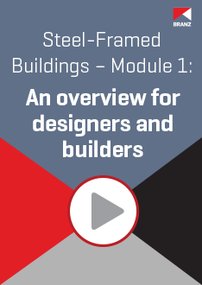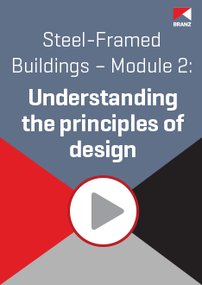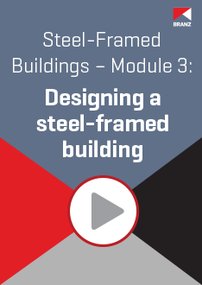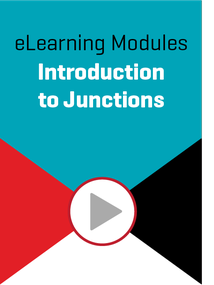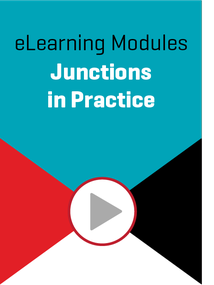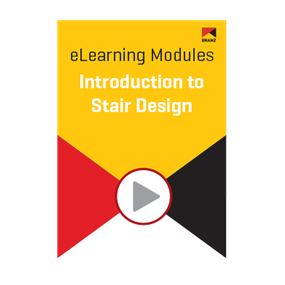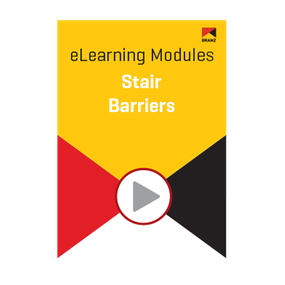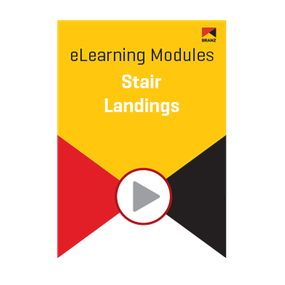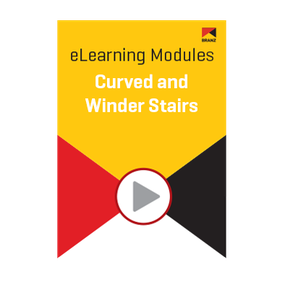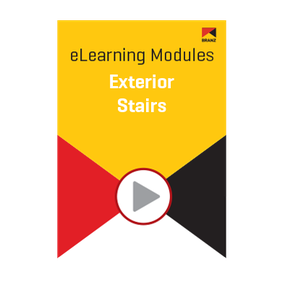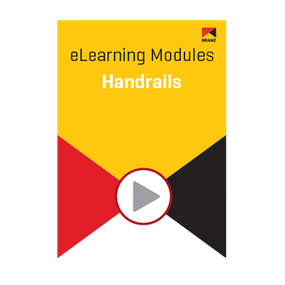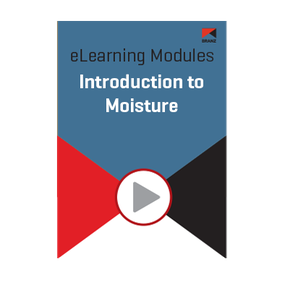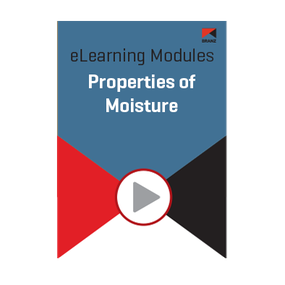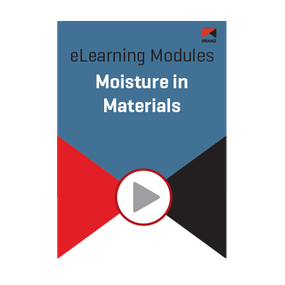H1 compliance changes - key challenges
In this free 20-minute module, you’ll learn about some of the key challenges to achieving or exceeding the new performance requirements to comply with H1 Energy efficiency. The focus is on H1/AS1 and H1/VM1 5th edition amendment 1.
Topics include:
- What are construction R-values?
- Roofs – sloping and skillion
- Floors – underslab heating and slabs with attached unconditioned spaces
- Windows – compliance and avoid overheating
- Doors – compliance and opaque doors
- Walls – compliance and improved performance
- Secondary insulation – improve performance for walls and roofs
Steel-Framed Buildings – An overview for designers and builders
This 20-minute module steps designers and builders through the basics of steel-frame buildings. By completing these building blocks, you will gain an understanding of statutory requirements; materials and specifications; linings, thermal breaks, and insulation; and floors, roofs, and walls.
Steel-Framed Buildings – Understanding the principles of design
This 20-minute module gives designers in-depth, practical guidance on design principles and considerations for lightweight steel framing that differ from timber construction. This module includes preplanning; steel basics; fixings and connections; and on-site remediation.
Steel-Framed Buildings – Designing a steel-framed building
This 20-minute module provides comprehensive guidance on the design and construction of steel-framed buildings and steps learners through a diverse range of fundamental topics including walls, floors, and rafters; roof structure; insulation; thermal breaks and underlays; wiring and piping; fire and acoustics; windows, doors and wall cladding; bracing; and foundations and connections.
Junctions module: Introduction to junctions
A junction is where materials meet or change direction and can be a weakness in the weathertightness of the building envelope. This module covers how water behaves; why junctions are important; the different types of junctions.
Junctions module: Design principles for junctions
When designing junctions, we need to consider the situation or context that the junctions are in, the appropriate materials we need to use, and the best design practices. This module covers geographical location; suitable materials; designing flashings and penetrations; designing for maintenance.
Junctions module: Junctions in practice
Using case studies for a simple house and a complex house, this module illustrates the design of a variety of junctions and the issues to consider.
Junctions module: Junction installation for LBPs
This module provides an introduction to junction installation for LBPs. It covers what are junctions and why they are important; how water behaves; flashings, penetrations, sealants, and sequencing; what you need to know before you start building; common issues and problems during installation.
Stairs Module: Introduction to Stair Design
This module provides an introduction to stairway design following D1/AS1 including specifications and features that are required for safety and ease of use.
Stairs Module: Stair Barriers
This module covers design and construction requirements for barriers, specifically in relation to stairways.
Stairs Module: Stair Landings
This module covers design and construction requirements for landings, including quarter and half landings.
Stairs Module: Curved and Winder Stairs
This module covers D1/AS1 design requirements for curved and winder stairs.
Stairs Module: Exterior Stairs
This module covers D1/AS1 design requirements for exterior stairs.
Stairs Module: Handrails
This module focuses on stair handrails, including when and why they’re used, and specifications for handrail design in different situations.
Module: Building consent challenge
This module is for anyone who is or could be involved in the building consent process. You’ll start with five projects, but not all of them will need consent.
To pass this module, you need to work through the steps for the rest of the projects to get a Code Compliance Certificate for each.
Gain 100% in the test at the end of the module, and you'll receive a record of your completion that can be submitted as part of your CPD activity log.
Module: Introduction to the LBP Scheme
This module focuses on the basics of the Licensed Building Practitioners (LBP) Scheme. It is broken down into two paths – one for tradespeople and designers looking to become licensed and one for current licensed building practitioners.
Topics covered in this self-paced module:
- The LBP Scheme and its benefits
- The roles and responsibilities of an LBP
- The scope to the different licence classes
- Skills maintenance
- Did I understand all of this?
Gain 100% in the test at the end of the module, and you'll receive a record of your completion that can be submitted as part of your CPD activity log.
Module: Introduction to moisture
Moisture can make its way into a house in a range of ways - exterior, interior, ground and construction. This module focuses on the effects of moisture on houses and the people who live in them.
Topics covered in this self-paced module:
- Where does it come from?
- Why is it important?
- In the past
- Library of useful material
Gain 100% in the test at the end of the module, and you'll receive a record of your completion that can be submitted as part of your CPD activity log.
Module: Properties of moisture
The structure and behaviour of moisture can help us understand why a house is having weathertightness issues and how to design to avoid those issues. Weathertightness issues in houses can lead to health problems, financial headaches and structural worries.
Topics covered in this self-paced module:
- Why is moisture important to understand?
- What form does H₂O take?
- How does it behave?
- Library of useful material
Gain 100% in the test at the end of the module, and you'll receive a record of your completion that can be submitted as part of your CPD activity log.
Module: Water vapour in air
Water vapour is the gaseous form of water. This module focuses on how water vapour and the forces that act on it create condensation in buildings.
Topics covered in this self-paced module:
- Water vapour, pressure and saturation
- Relative humidity and dew point
- Predicting condensation and making design choices
- Library of useful material
Gain 100% in the test at the end of the module, and you'll receive a record of your completion that can be submitted as part of your CPD activity log.
Module: Moisture in materials
The way water is transferred and stored depends on whether the moisture arrives as a liquid or a vapour. This module focuses on how moisture enters materials and how we measure for moisture in materials.
Topics covered in this self-paced module:
- How is moisture transferred to materials?
- How much moisture is stored in materials?
- How do we measure moisture in materials?
- Library of useful material
Gain 100% in the test at the end of the module, and you'll receive a record of your completion that can be submitted as part of your CPD activity log.

